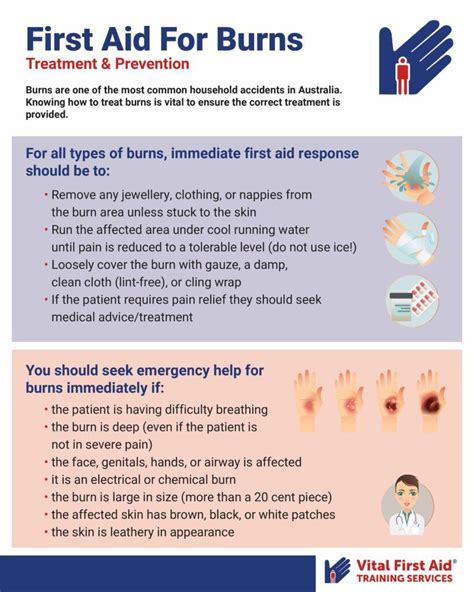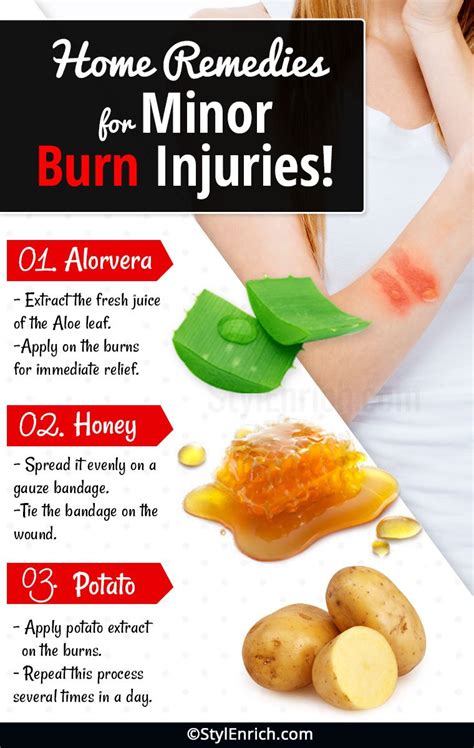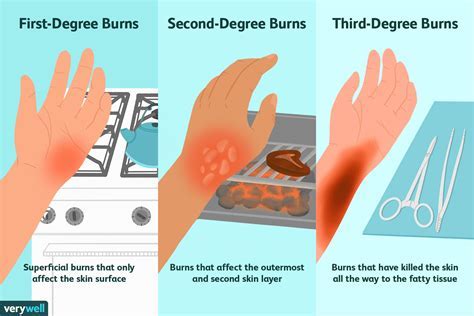Intro
Learn 5 effective ways to treat burns, including minor and severe burn care, using natural remedies and medical treatments to promote wound healing and prevent scarring and infection.
Burns are a common household injury that can be painful and potentially serious. They can occur from various sources, including fire, hot surfaces, electrical appliances, and chemicals. The severity of a burn can range from mild to severe, and it's essential to know how to treat them properly to promote healing and prevent infection. In this article, we will explore the different types of burns, their symptoms, and most importantly, the ways to treat them.
Burns can be classified into three main categories: first-degree, second-degree, and third-degree. First-degree burns, also known as superficial burns, affect only the outermost layer of the skin and are characterized by redness, swelling, and pain. Second-degree burns, also known as partial-thickness burns, affect both the outer and inner layers of the skin and can cause blisters, redness, and swelling. Third-degree burns, also known as full-thickness burns, extend through all layers of the skin and can cause charred or white skin, and may not be painful due to nerve damage.
It's crucial to treat burns promptly and correctly to prevent infection, promote healing, and minimize scarring. In the following sections, we will discuss the different ways to treat burns, including home remedies, medical treatments, and preventive measures.
Understanding Burn Treatment

Assessing Burn Severity
To determine the severity of a burn, you should consider the size, depth, and location of the burn. You should also look for signs of infection, such as increased redness, swelling, or pus. If you're unsure about the severity of a burn or if it's not healing properly, it's always best to consult a medical professional.5 Ways to Treat Burns

- Cool the Burn: For minor burns, cooling the affected area with cool tap water or a cool compress can help reduce pain and inflammation. Never use ice or ice water, as this can cause further damage.
- Apply Topical Creams: Topical creams, such as aloe vera or antibiotic ointments, can help soothe and protect the skin. These creams can also aid in the healing process and prevent infection.
- Use Dressings and Bandages: Covering the burn with a non-stick dressing or bandage can help protect the skin from further irritation and infection. You should change the dressing daily to promote healing and inspect the burn for signs of infection.
- Take Pain Relief Medication: Over-the-counter pain relief medications, such as acetaminophen or ibuprofen, can help manage pain and discomfort associated with burns.
- Seek Medical Attention: For more severe burns, it's essential to seek medical attention immediately. Medical professionals can provide further treatment, such as debridement, skin grafts, or antibiotics, to promote healing and prevent infection.
Home Remedies for Burns

- Aloe vera gel: Aloe vera has anti-inflammatory and soothing properties that can help calm the skin and promote healing.
- Honey: Honey has antibacterial properties that can help prevent infection and aid in the healing process.
- Tea tree oil: Tea tree oil has antiseptic properties that can help prevent infection and promote healing.
- Coconut oil: Coconut oil has moisturizing properties that can help soothe and calm the skin.
Preventing Burns
Prevention is key when it comes to burns. Here are some tips to help prevent burns:- Be cautious when handling hot surfaces or appliances.
- Keep children away from hot surfaces or appliances.
- Use protective gear, such as oven mitts or gloves, when handling hot objects.
- Keep electrical appliances away from water.
- Install smoke detectors and ensure they are working properly.
Medical Treatments for Burns

- Debridement: The removal of dead skin or tissue to promote healing and prevent infection.
- Skin grafts: The transplantation of healthy skin to cover the affected area.
- Antibiotics: Medications that help prevent or treat infection.
- Pain management: Medications or therapies that help manage pain and discomfort.
Recovery and Rehabilitation
Recovery and rehabilitation are crucial after a burn injury. This may include physical therapy to regain mobility and strength, as well as emotional support to cope with the trauma of the injury.Conclusion and Next Steps

We hope this article has provided you with valuable information on treating burns. If you have any questions or comments, please don't hesitate to share them below. You can also share this article with others who may find it helpful.
What are the different types of burns?
+Burns can be classified into three main categories: first-degree, second-degree, and third-degree. First-degree burns affect only the outermost layer of the skin, while second-degree burns affect both the outer and inner layers. Third-degree burns extend through all layers of the skin.
How do I treat a minor burn?
+For minor burns, you can cool the affected area with cool tap water or a cool compress, apply topical creams, and cover the burn with a non-stick dressing or bandage. You can also take pain relief medication to manage discomfort.
When should I seek medical attention for a burn?
+You should seek medical attention immediately if you're unsure about the severity of a burn, if the burn is large or deep, or if you notice signs of infection, such as increased redness, swelling, or pus.
